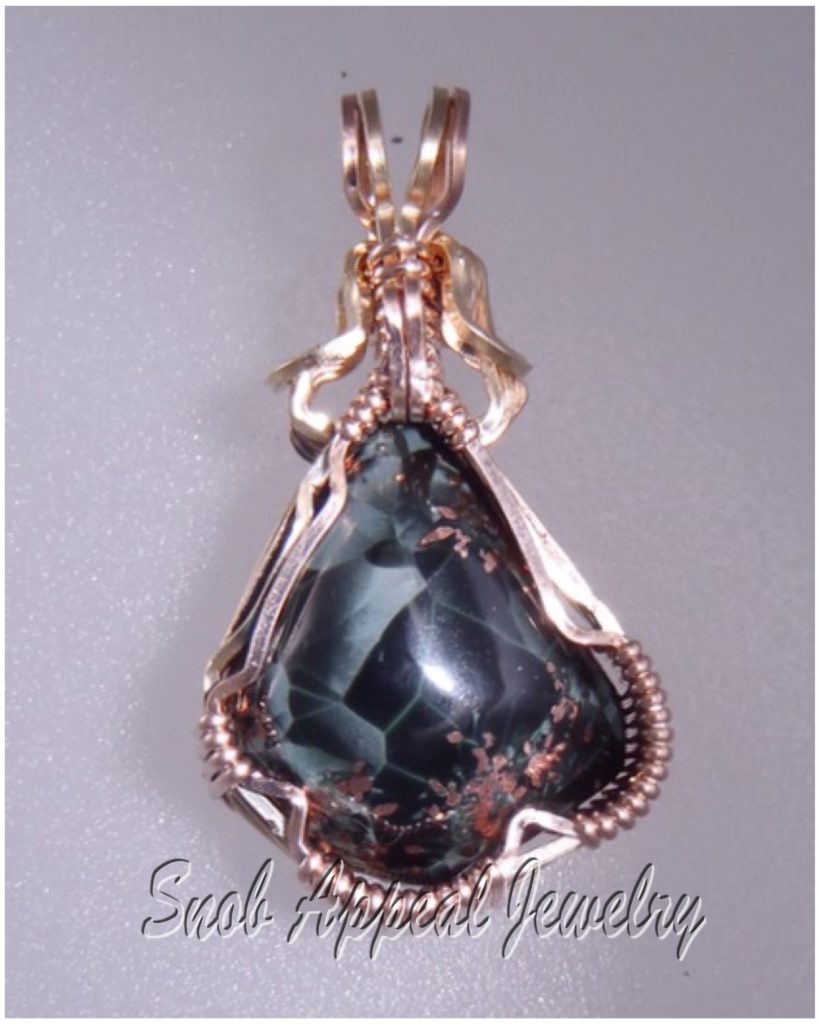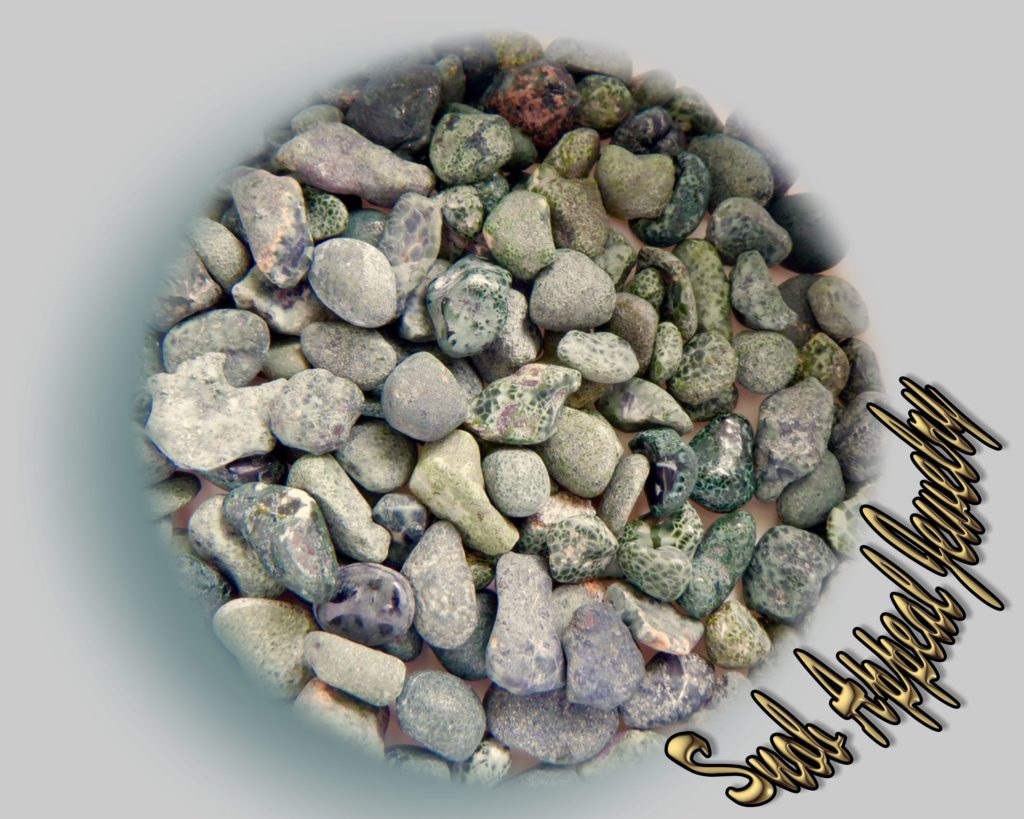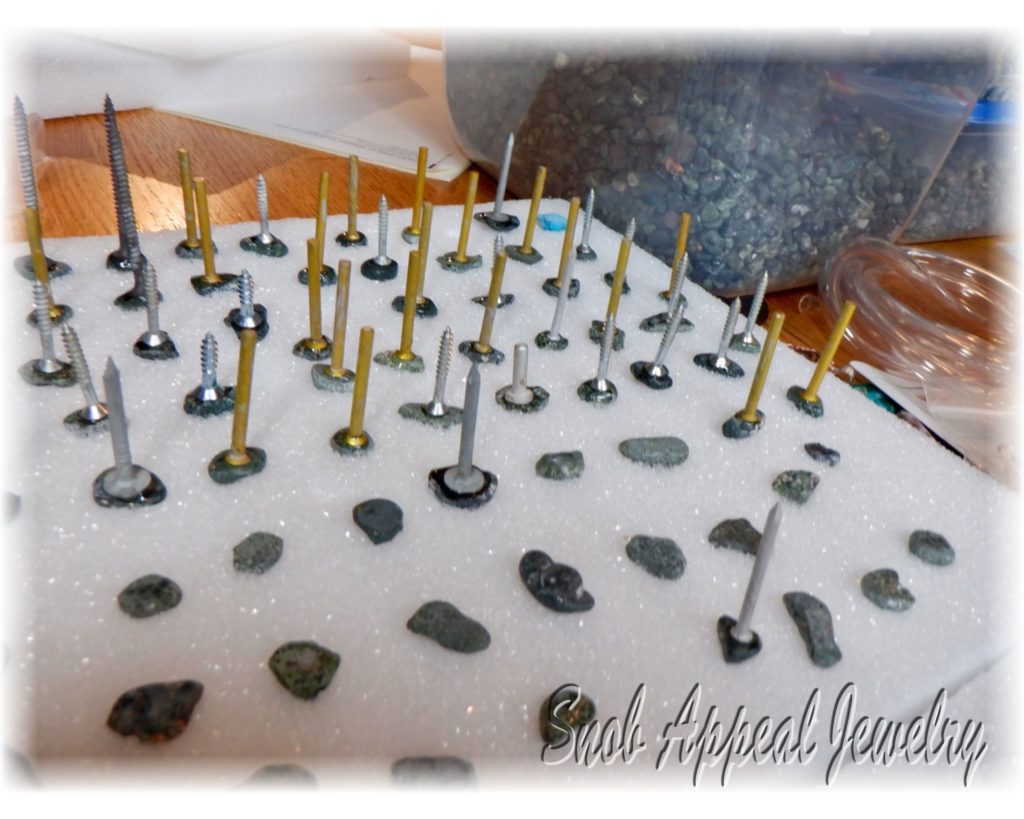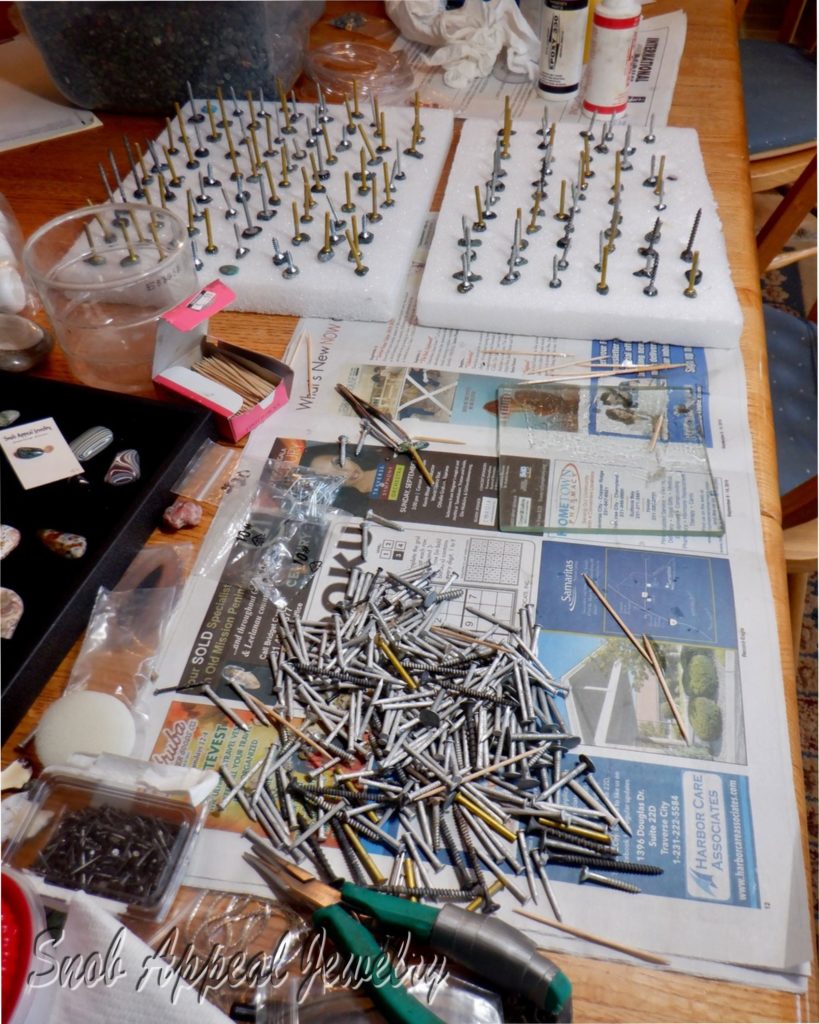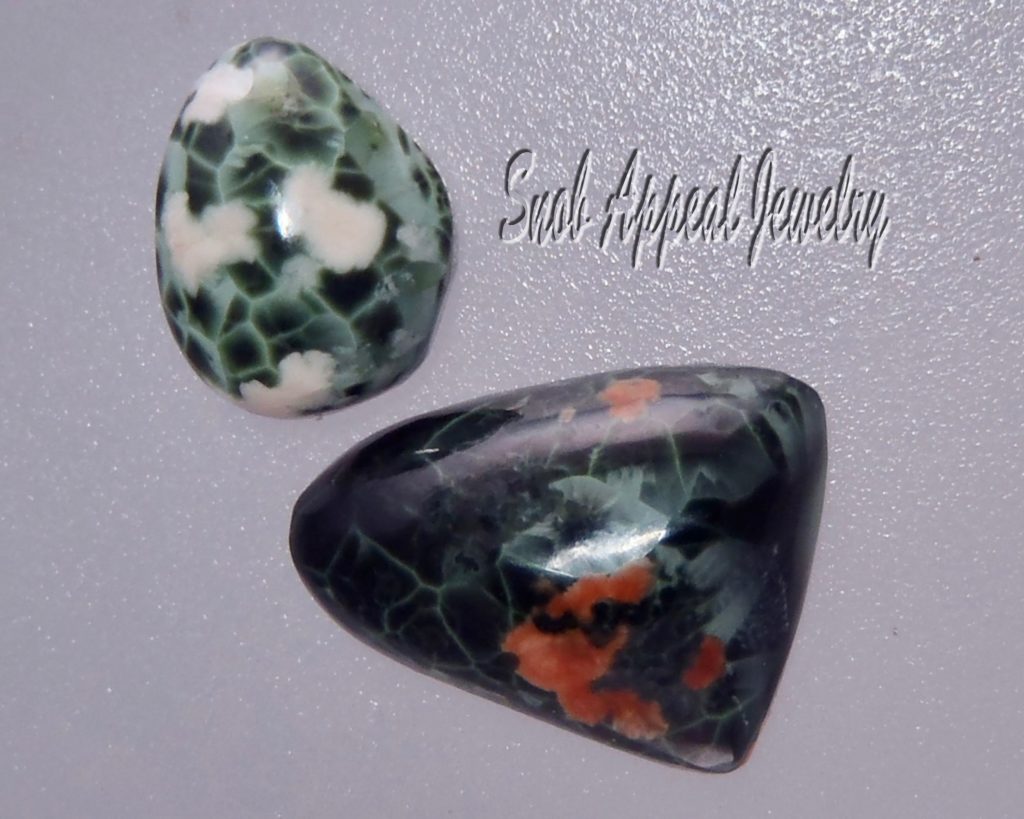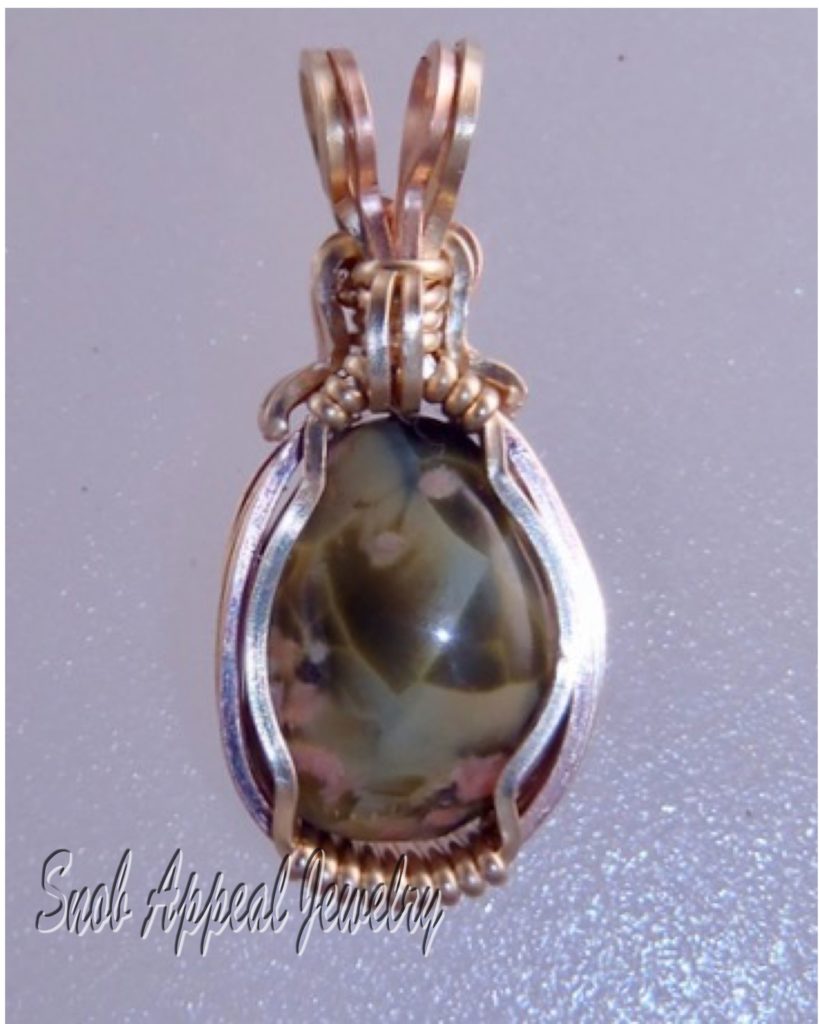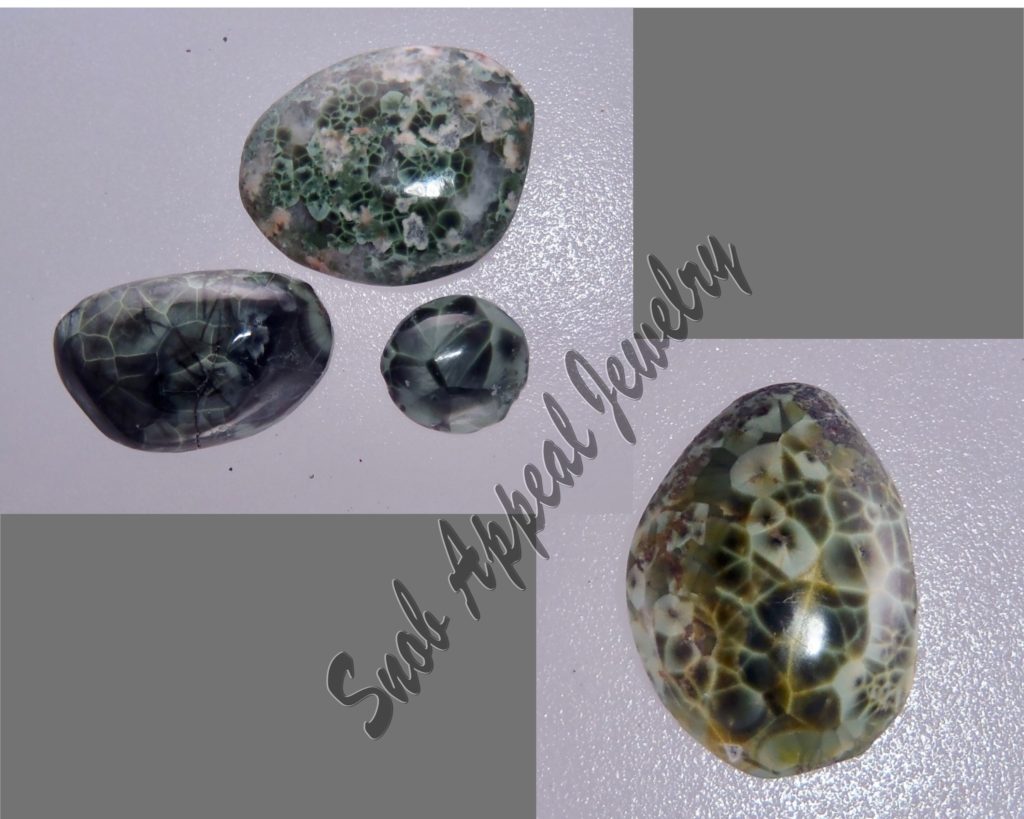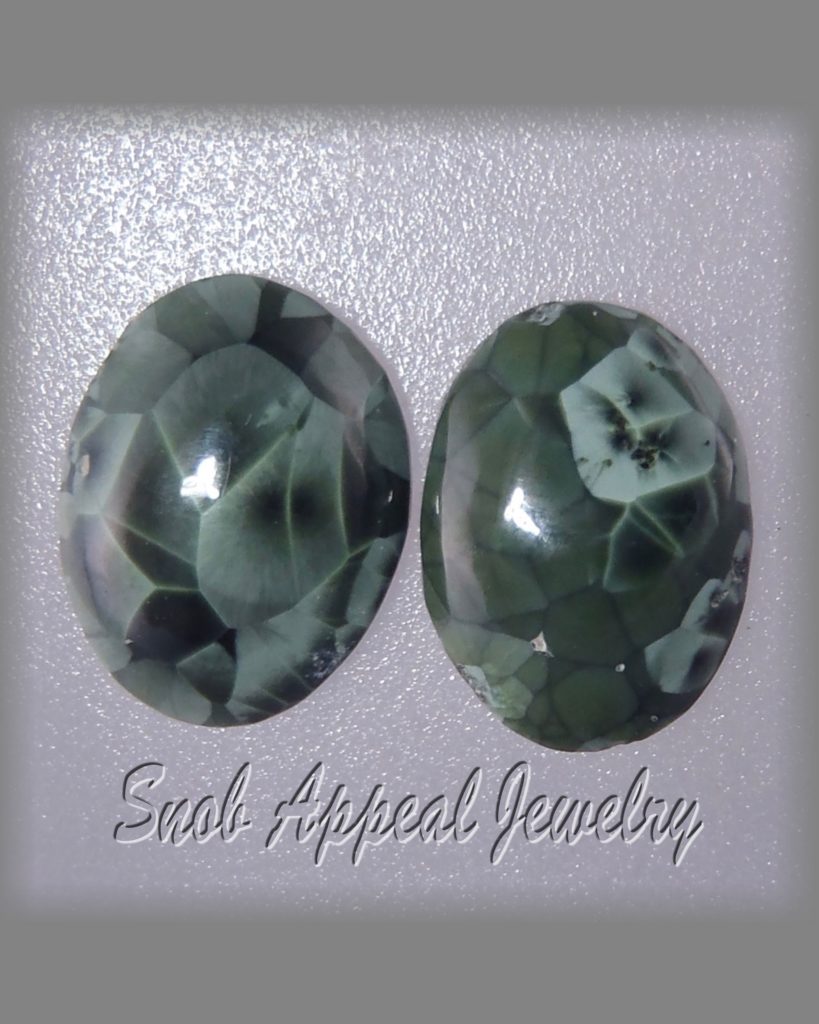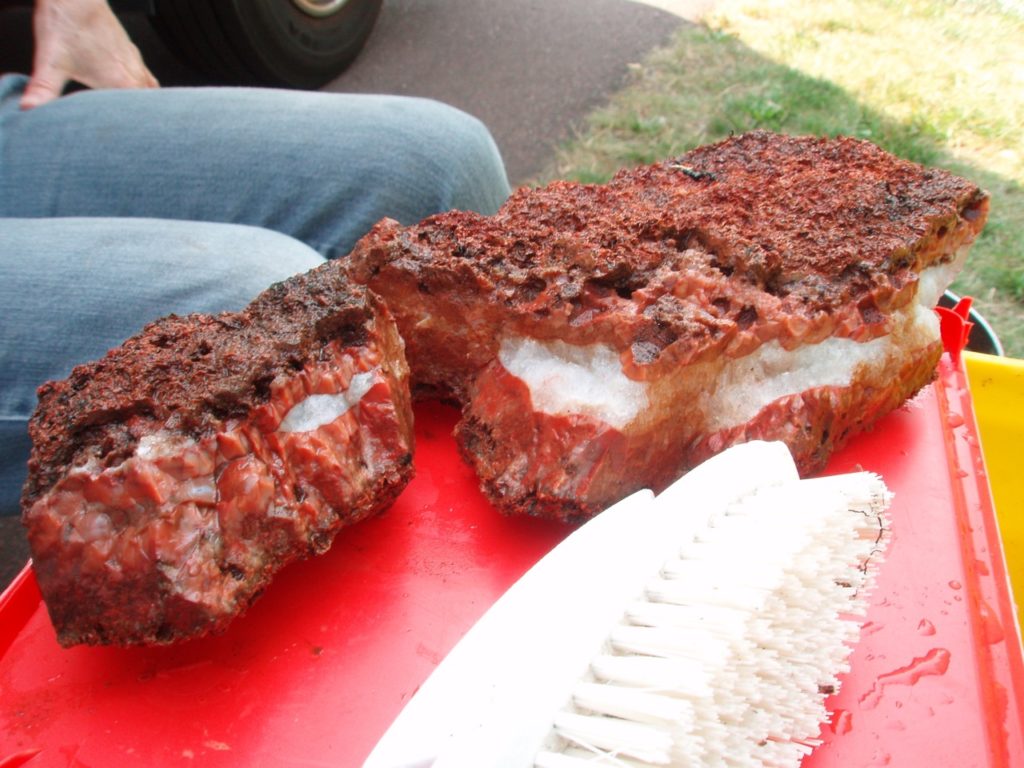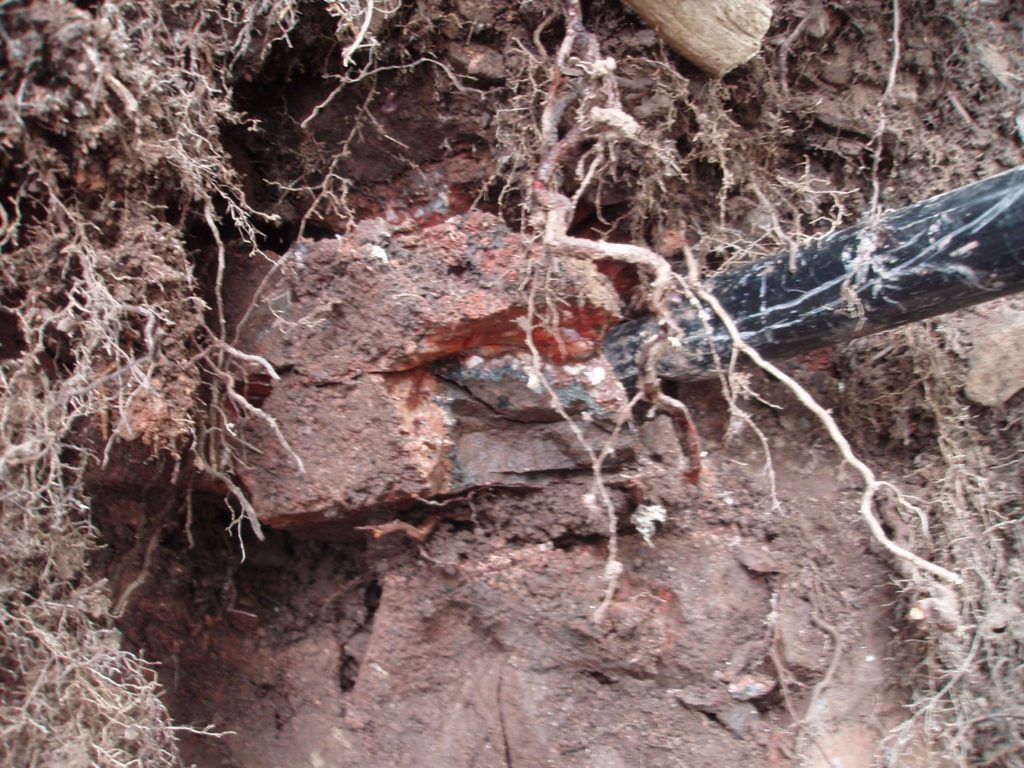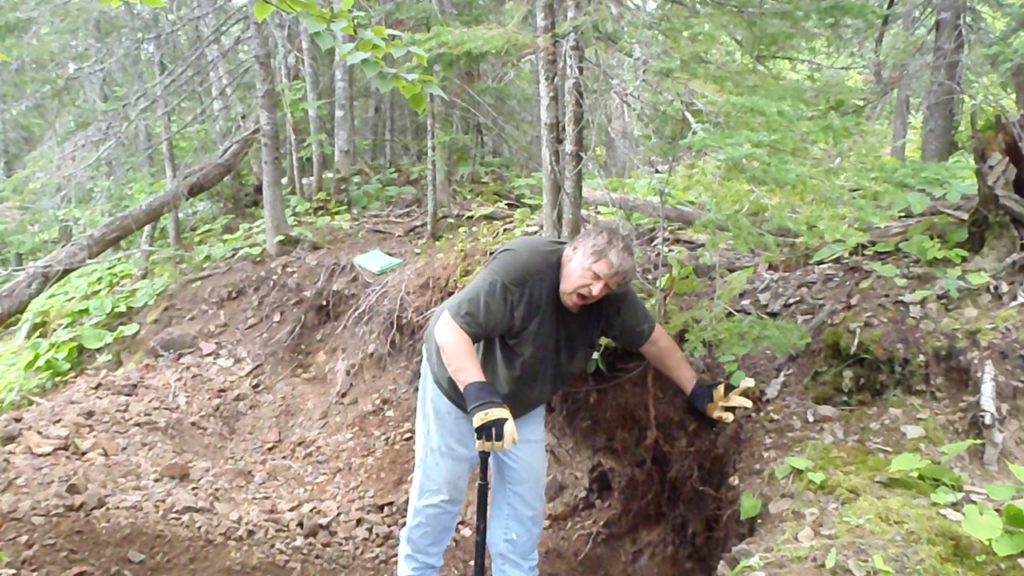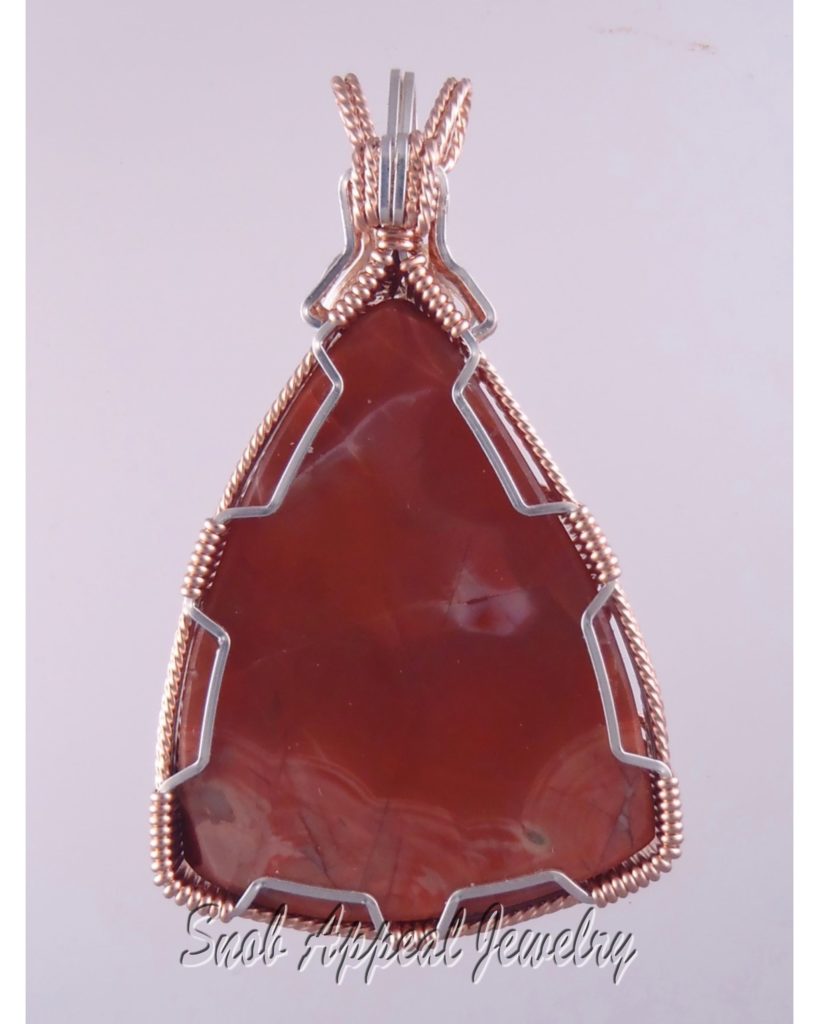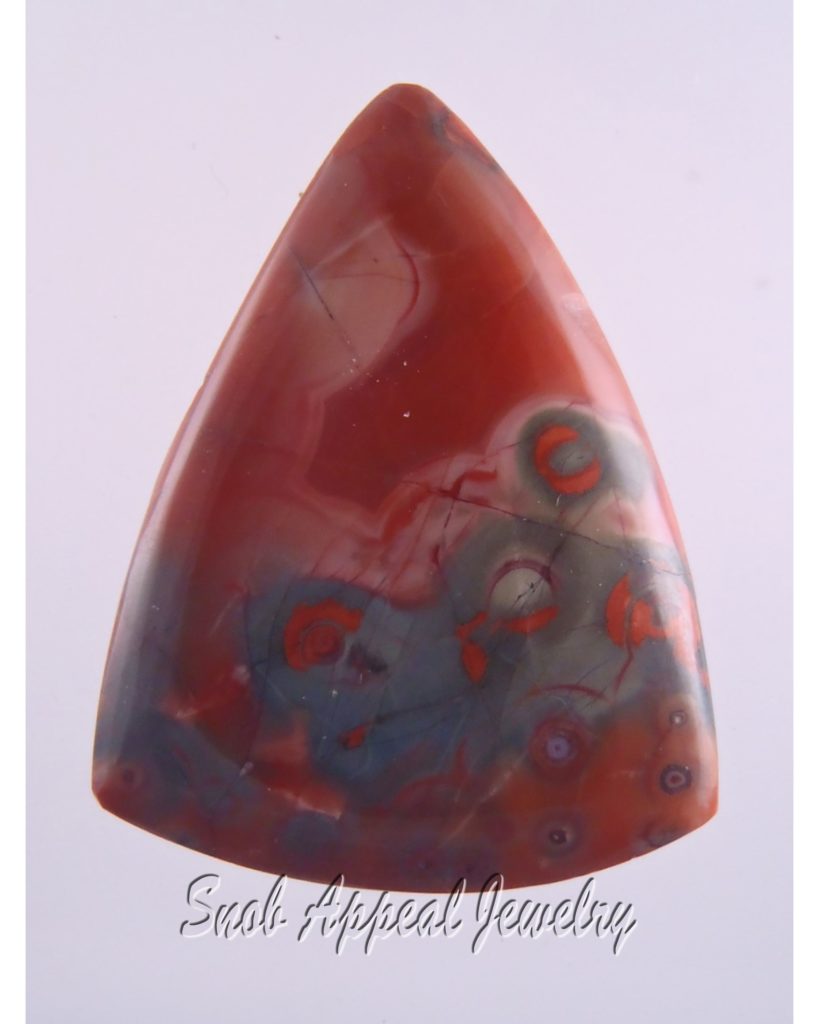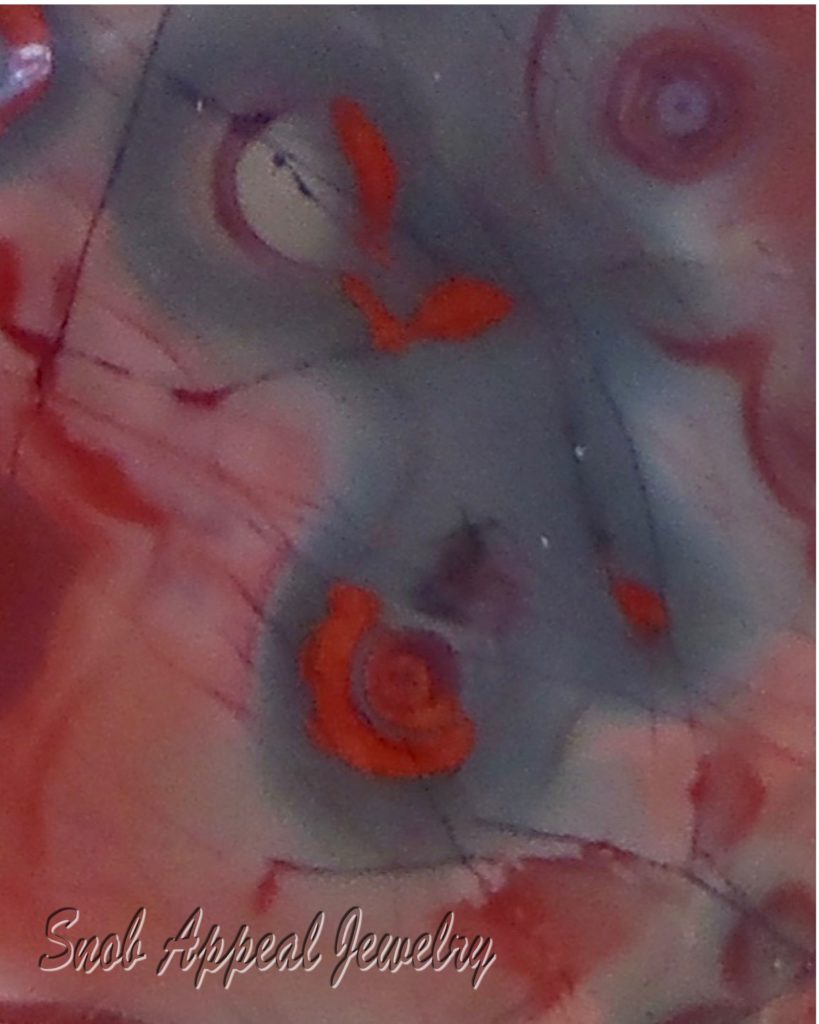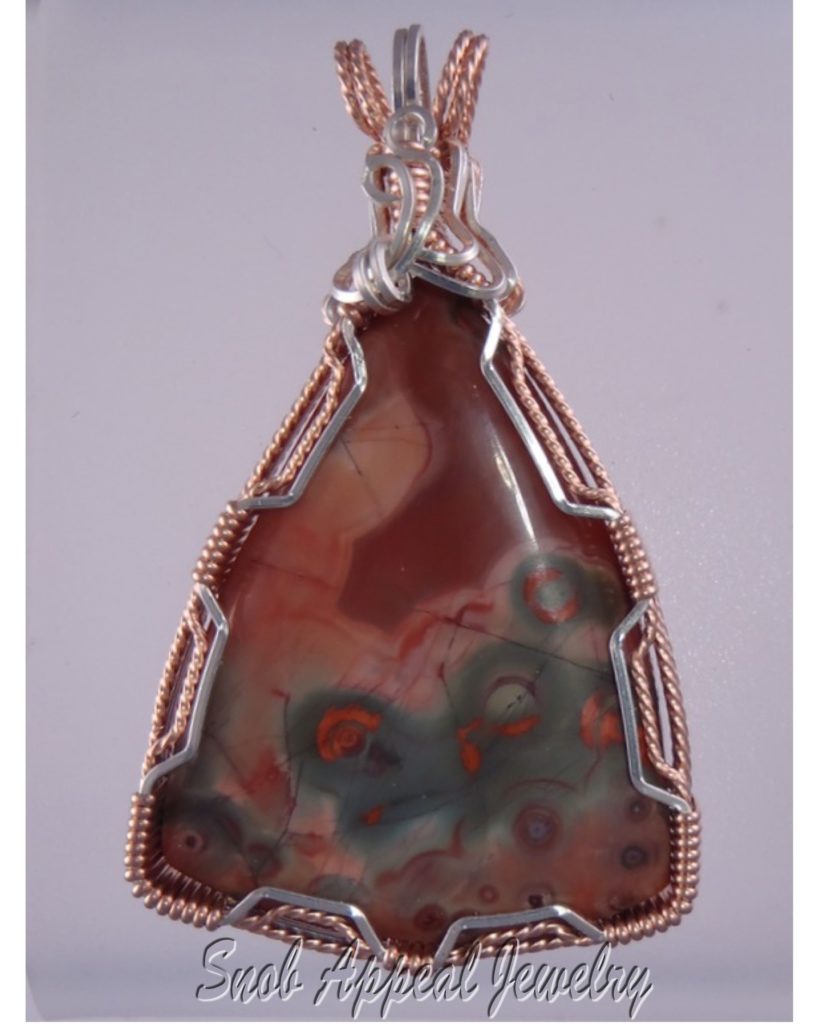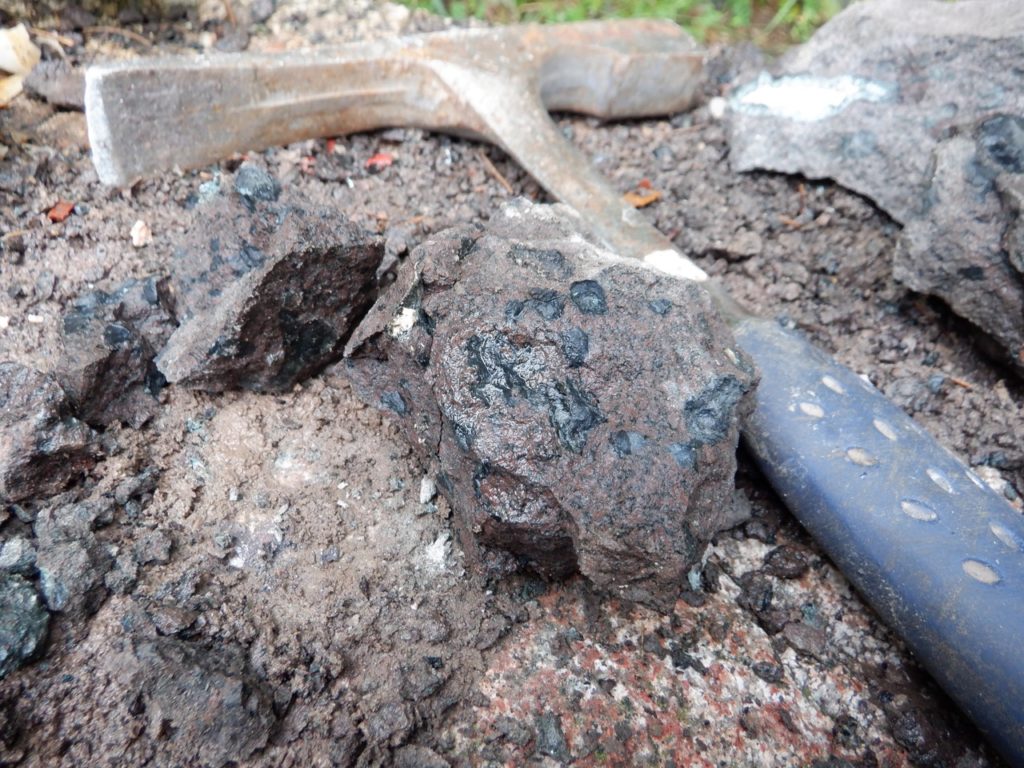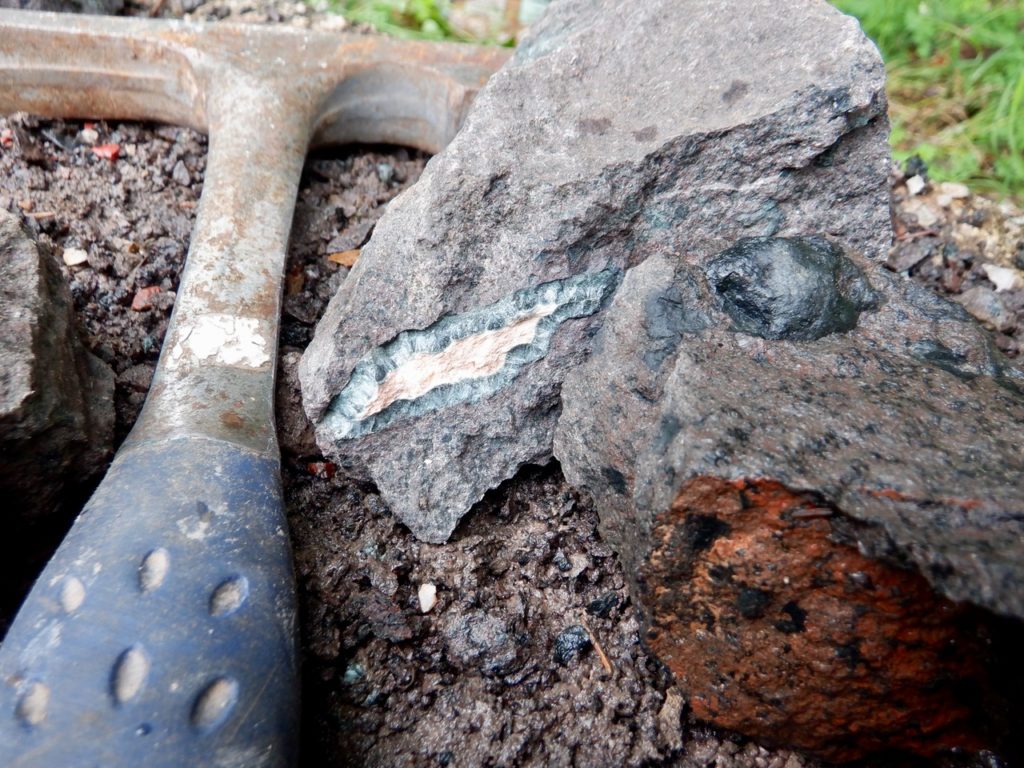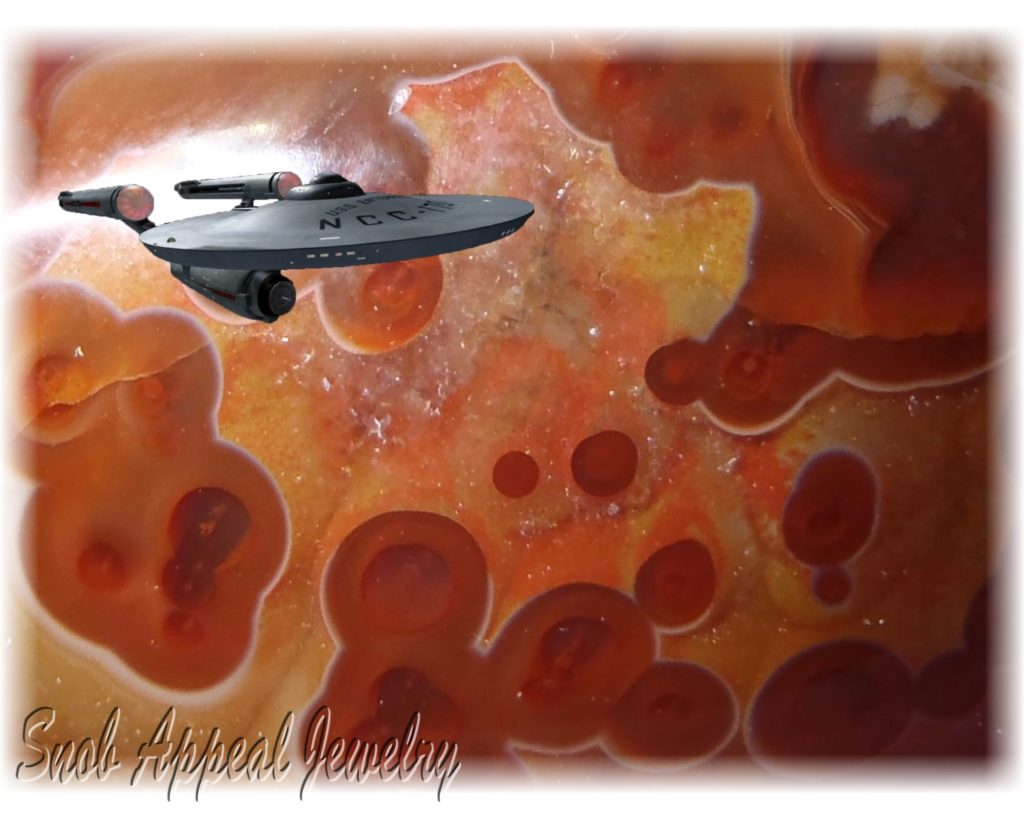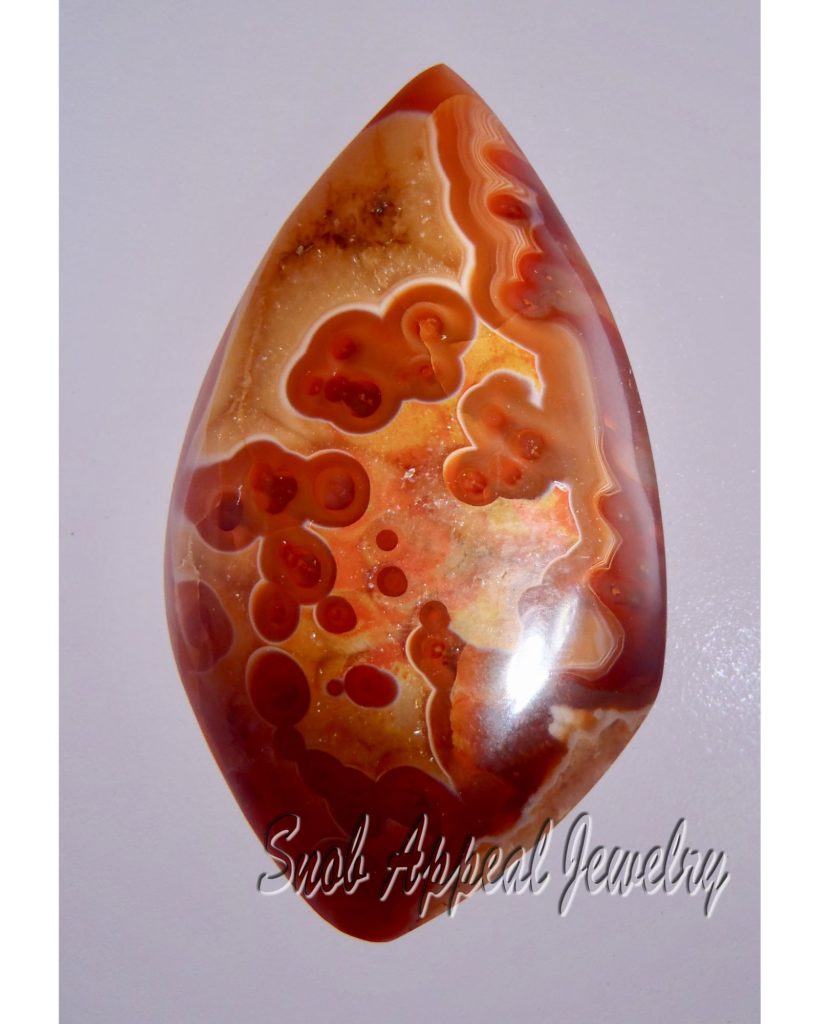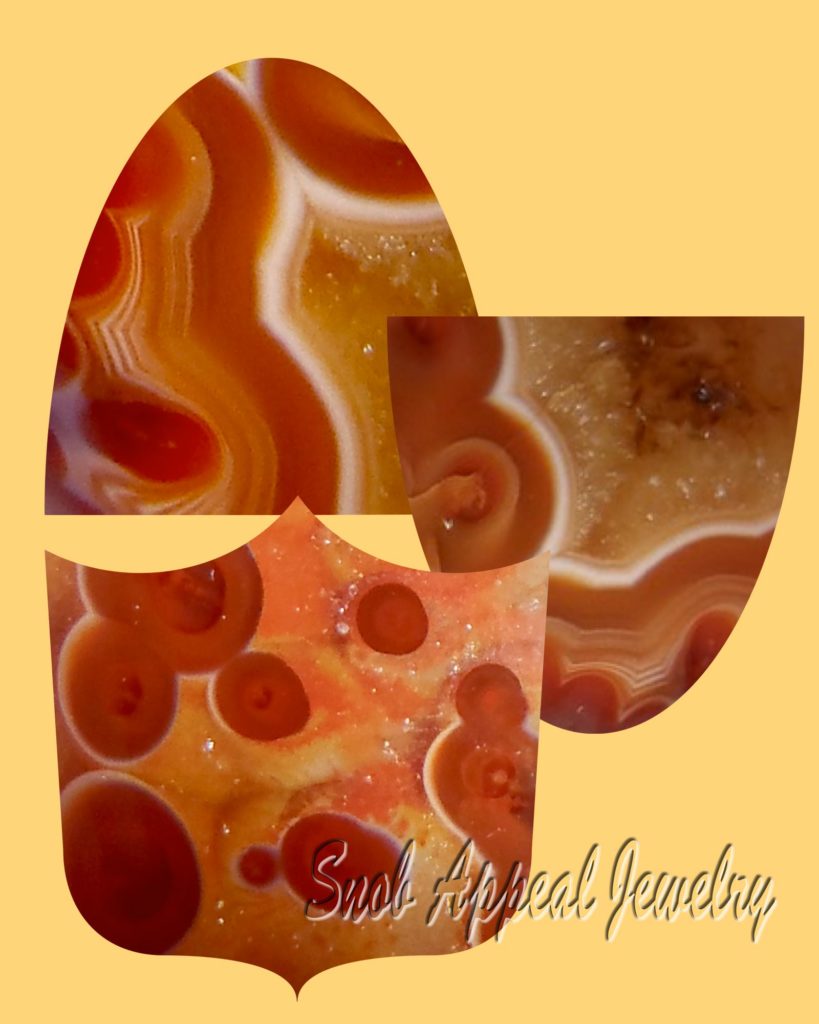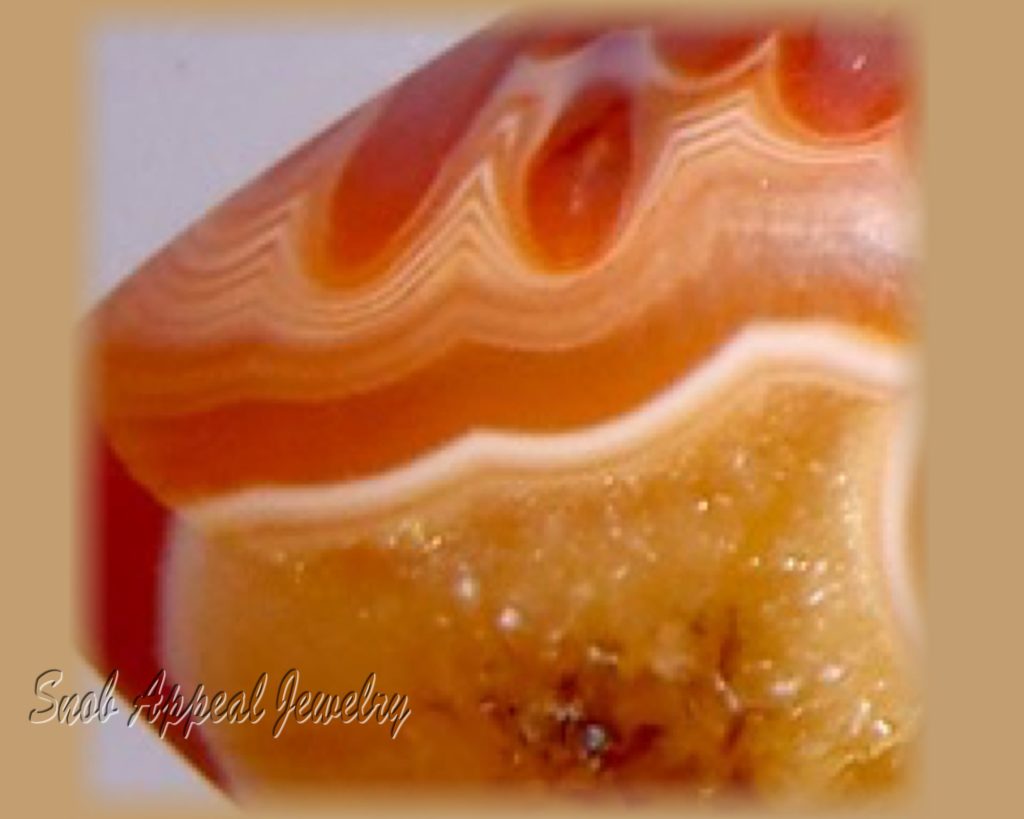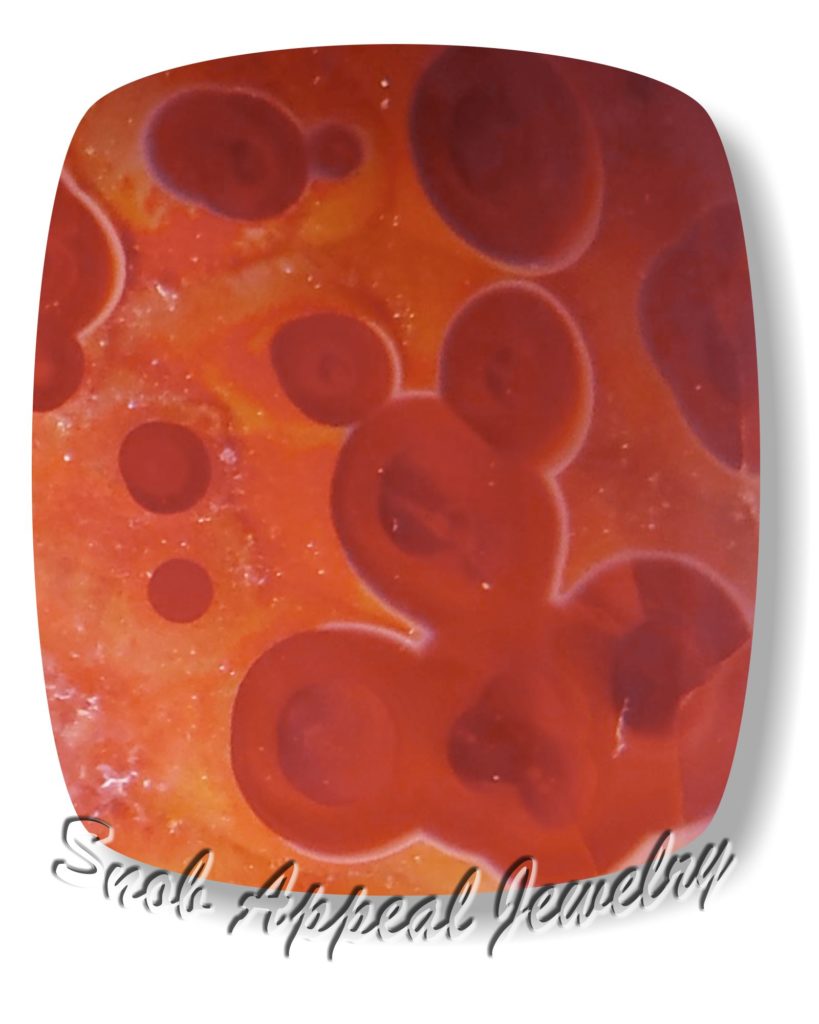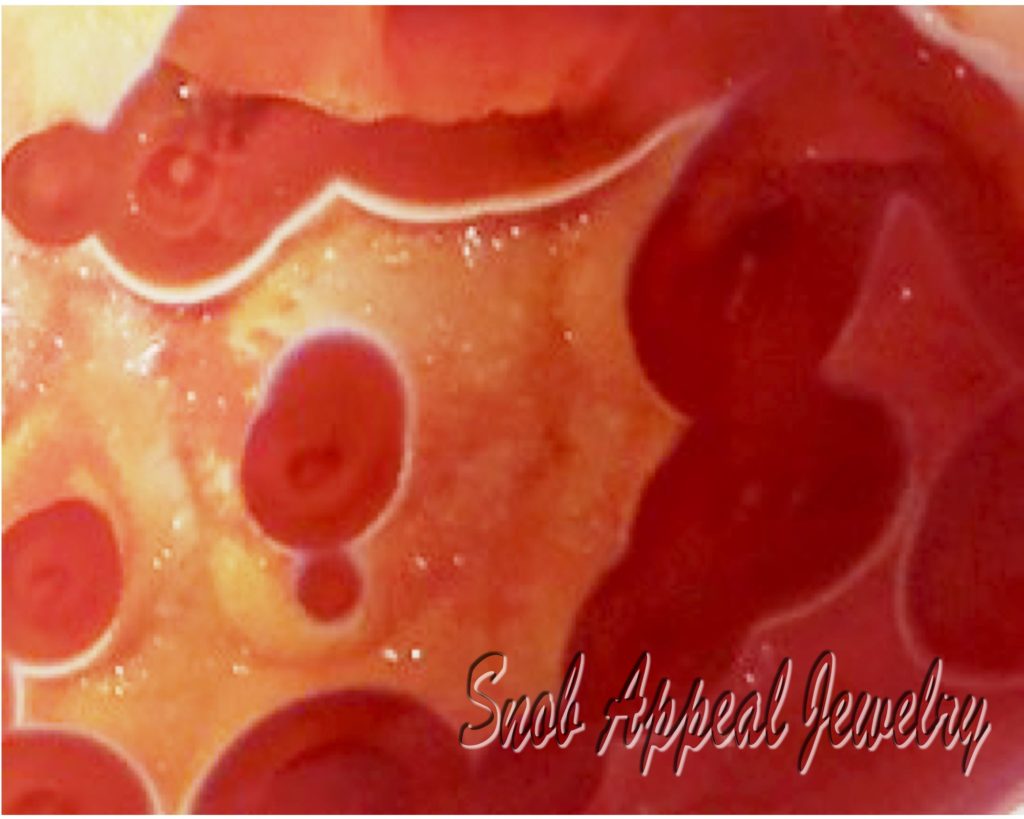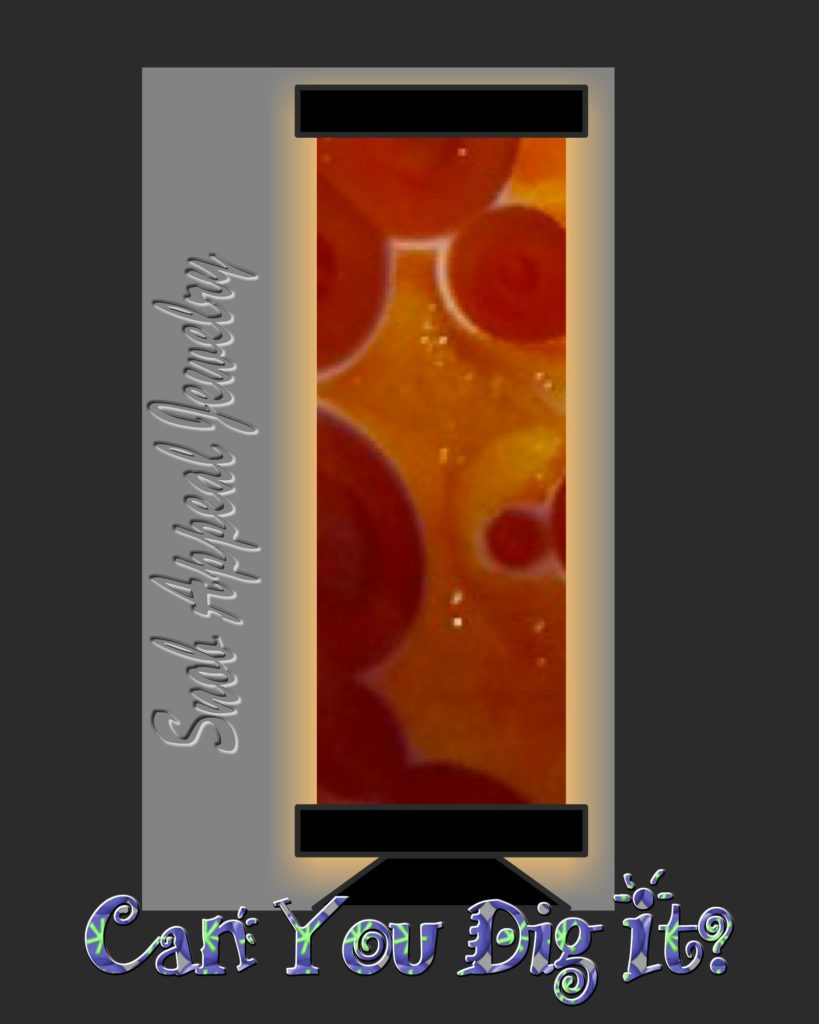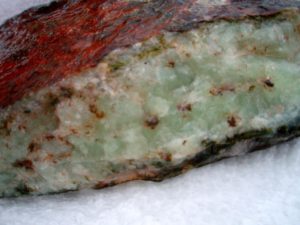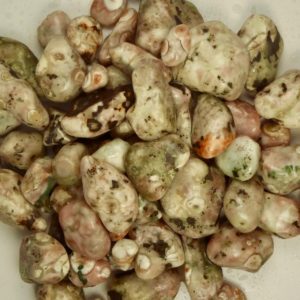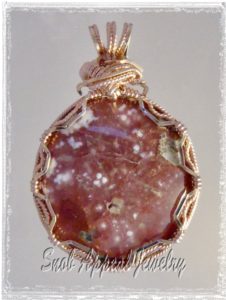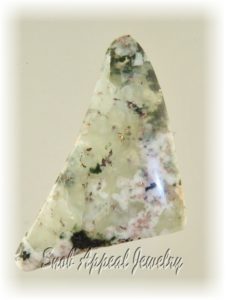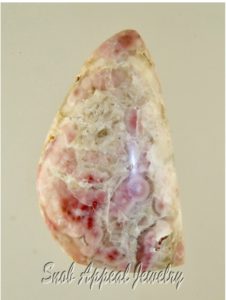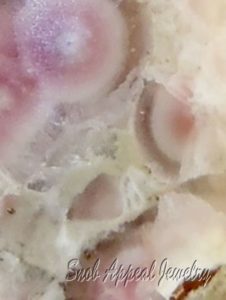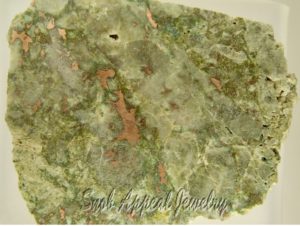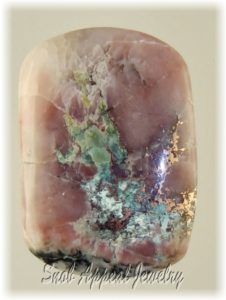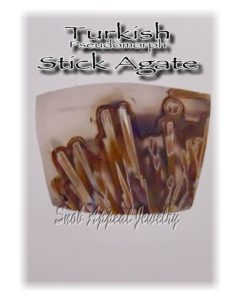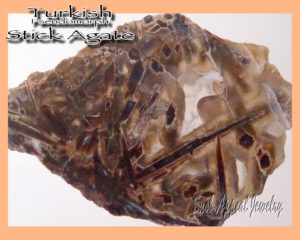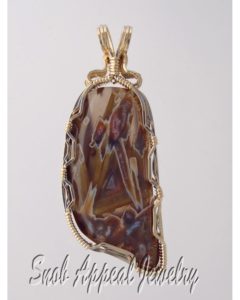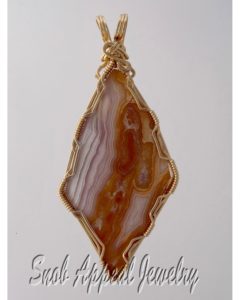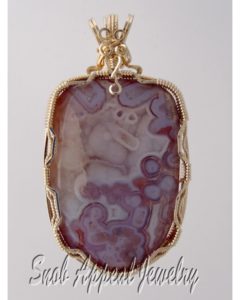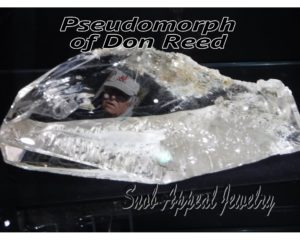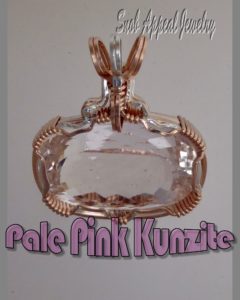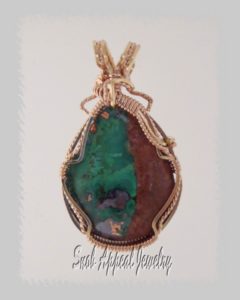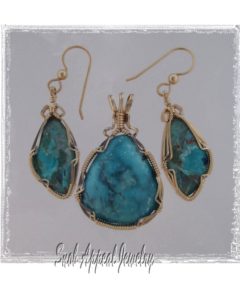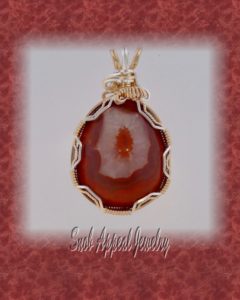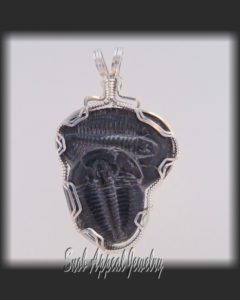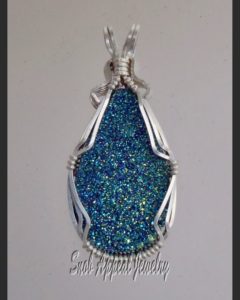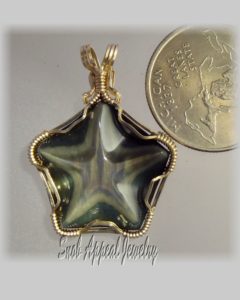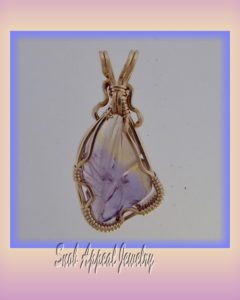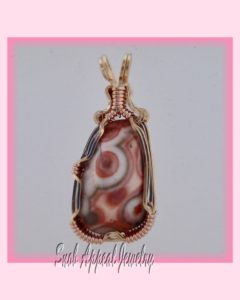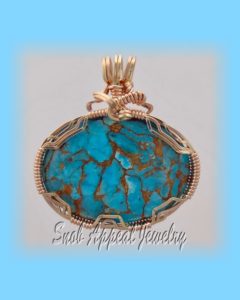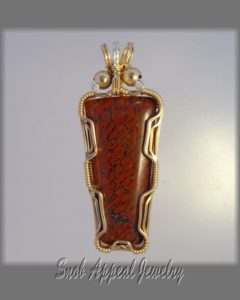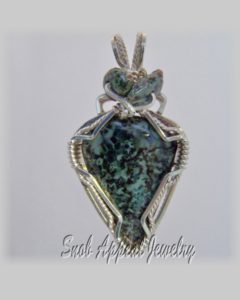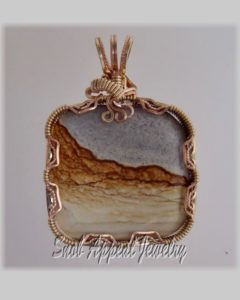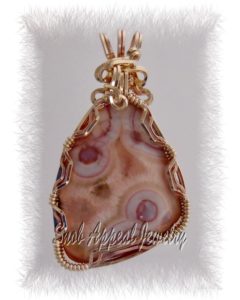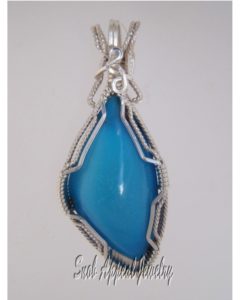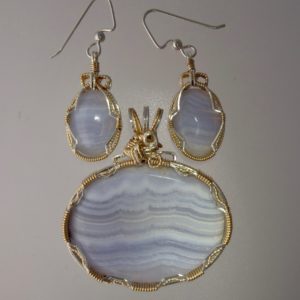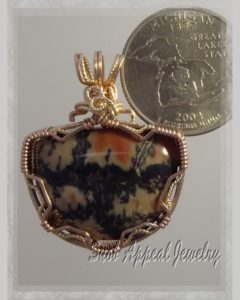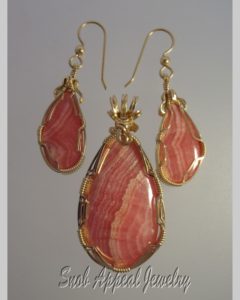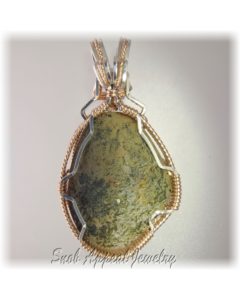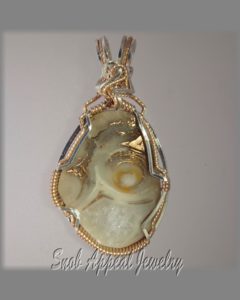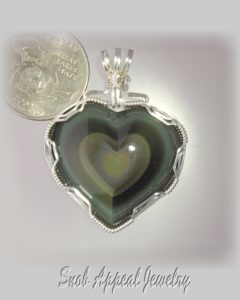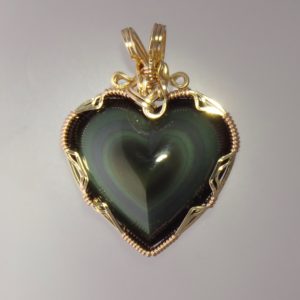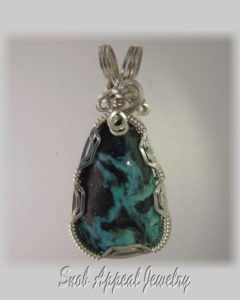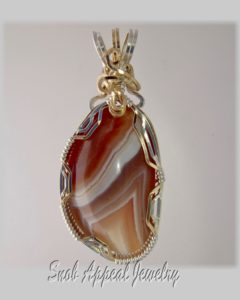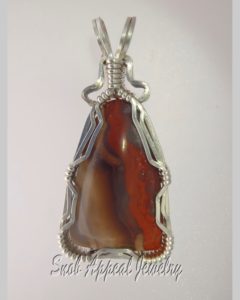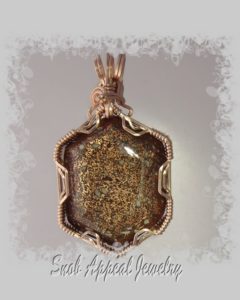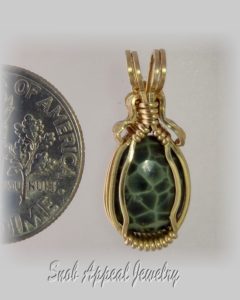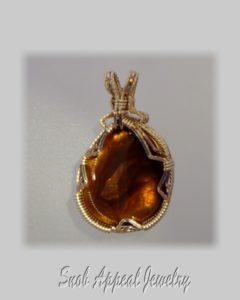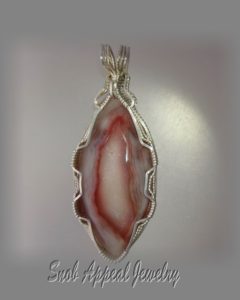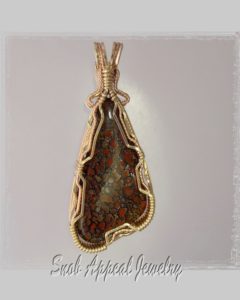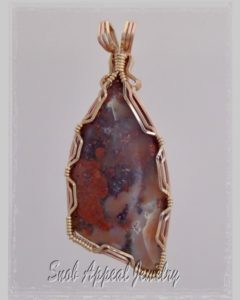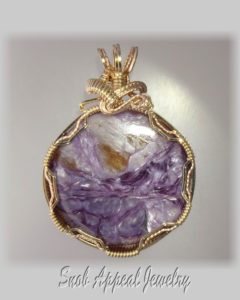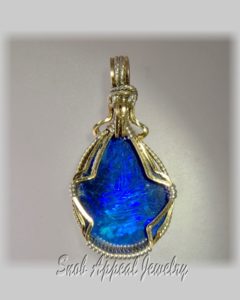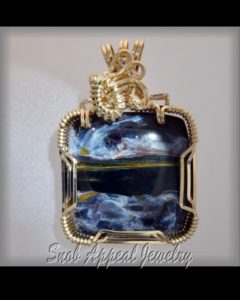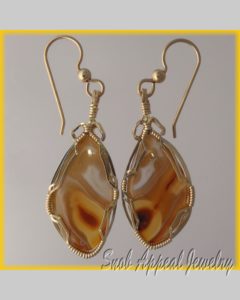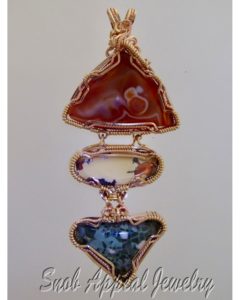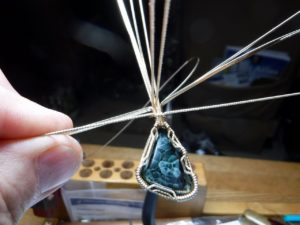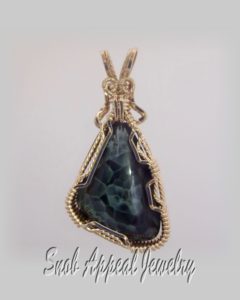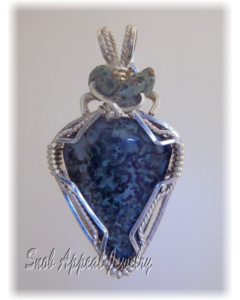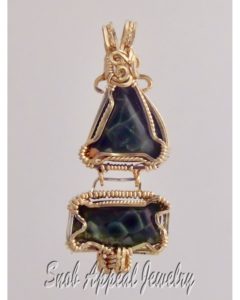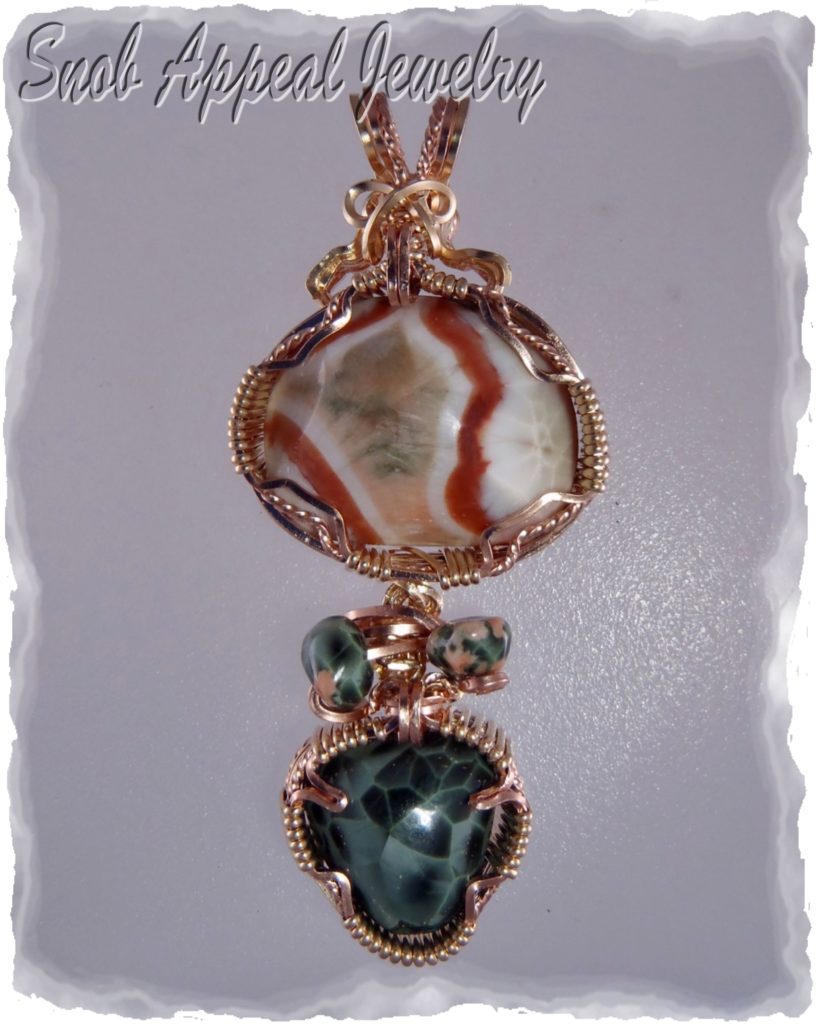
I have a good track record in identifying rocks and minerals, especially from the Great Lakes area. I’m not a know-it-all type person, but I have seen a lot of rocks and minerals in my day. Our website is an example of the variety of stones we use.
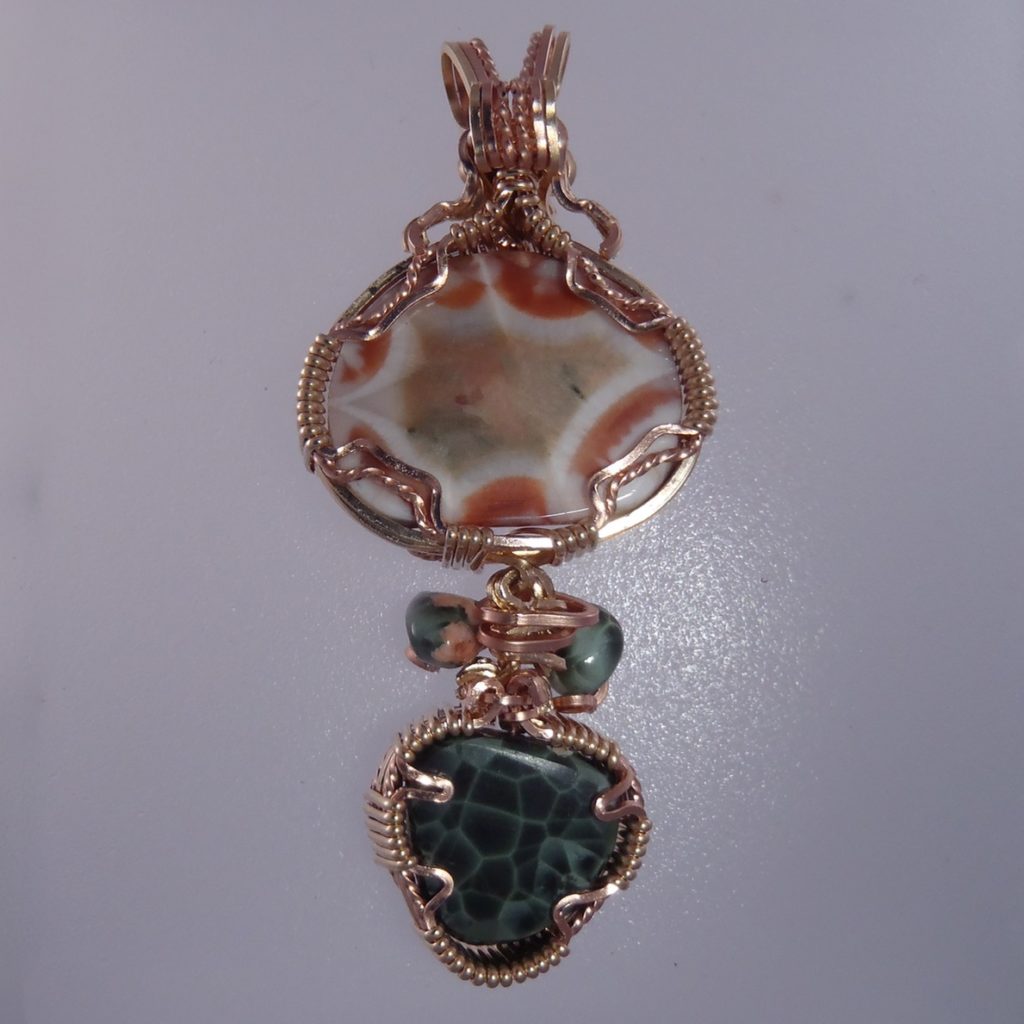
I generally do not use common jewelry store gems; ours are usually much more rare. My rock club friends, and others, will ask me to attempt an ID for them.
At our recent Club Show a random shopper was referred to me by another club member to identify some odd looking stones. She had an old bracelet from a garage sale; the stones falling off a base metal finding. I identified the stones as Thomsonite from the North Shore of Superior. Most of the cabs were small rounds, but the main cab was a very unusual, pastel Thomsonite, sporting a red banding not unlike a Lake Superior Agate.
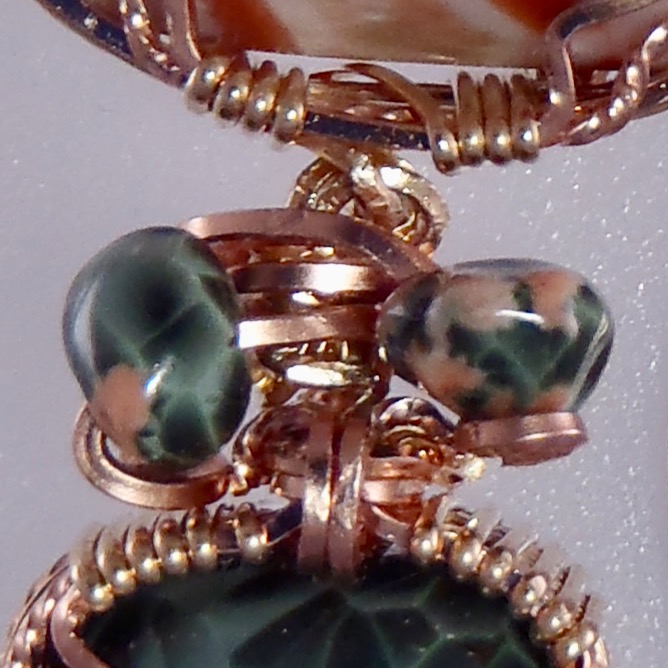
I asked her what she was going to do with the stones (I was not interested in the metal, which looked like it came from the kids table), as they were loose in a bag. She decided to swap the stones for a bracelet we were selling. Sometimes a stone calls me to create jewelry immediately, and this was the case with this Thomsonite. It was so unusual for a Thomsonite, at first glance I though it was an agate.
I knew what I was going to do with the main stone when I traded for it. The only concern was the stability of the Thomsonite. The stone was thick, and Thomsonite is fairly brittle with an iffy crystal structure at times. Thomsonite does not tolerate harmonic vibrations, and requires careful cutting, grinding, and polishing.
First I used a 4″ ProSlicer high speed saw blade. ProSlicers are thin, for cutting valuable material. I used a .012 blade to cut the Thomsonite. Water and a couple drops of coolant are a must. I carefully sliced the Thomsonite, but a small piece broke off, turning a round stone into one with a flat side. The majority of the gemstone remained intact. I’d rather a gemstone break early in the process. I can’t begin to count the stones I’ve rejected over the years, because they did not live up to my standards. In many cases a customer would not even know there was a problem, BUT I DO. I refuse to sell substandard jewelry.
After a Thomsonite was sliced, the breakage can still occur. Grinding wheels must be broken in and only the soft wheels on the Genie or Pixie (lapidary machines) can be used (remember the harmonic issue?). Happily, the grinding and polishing turned out well.
The Thomsonite could have been a stand-alone pendant, but I love to upgrade if I can. In this case the upgrade was an gorgeous Isle Royale Greenstone, collected off the island 50 years ago; swinging from the bottom of the Thomsonite. This Thomsonite and Greenstone Pendant turned out amazing. If a pendant turns out amazing, I feel amazing, and I know the customer will feel amazing! Life is good!
It turns out identifying a random baggie of garage sale stones could be reworked to something stunningly beautiful! You can own and love the finished product! Visit our Thomsonite page today!
Explore our wide selection of Greenstone Cabochons, Greenstone Pendants and Greenstone Earrings as well as Thomsonite and other jewelry from Keweenaw Minerals








